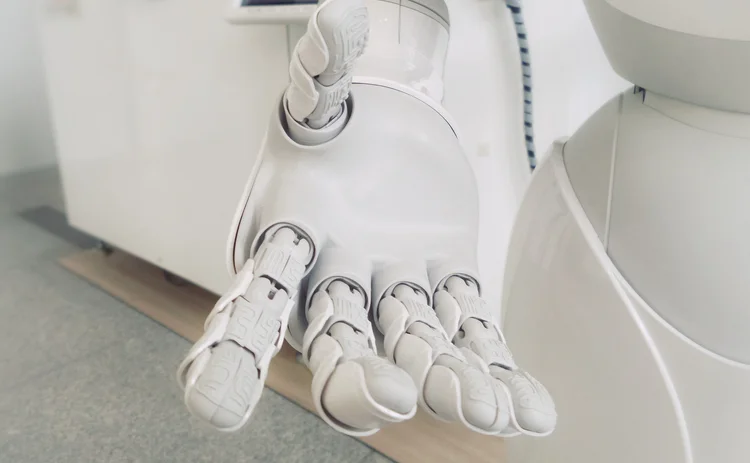SS&C looks to leverage Blue Prism’s RPA capabilities to improve reconciliations, onboarding
After acquiring Blue Prism earlier this year, SS&C is looking to pair its Chorus business process optimization tool with the RPA specialist.

In March, SS&C Technologies closed its $1.6 billion acquisition of Blue Prism, a company that specializes in robotic process automation. While there are those in financial services who feel that RPA is a “Band-Aid” rather than a root-cause remedy for manual processes, Michael Megaw, managing director of business process automation at SS&C, believes there’s a misconception about so-called digital workers.
“You can point digital workers in the direction of the work that needs to be done—RPA models don’t restrict you in that regard—and it’s typically less expensive to maintain,” he says. “I disagree with the sentiment that RPA is legacy technology. The capability of these digital workers is only getting better; we think that RPA is a component of getting our customers scale, and we aim to continue investing in the product and enhancing its capabilities.”
In its finance vertical, SS&C will first look to point Blue Prism’s digital workers at its suite of compliance tools. It is also pairing Blue Prism with its own business process optimization tool, SS&C Chorus. “[Blue Prism] connected well with our intelligent automation business, and we think that we can enhance that with our intelligent automation suite,” Megaw says.
But its in reconciliations and anti-money laundering/know-your-customer (AML/KYC) where RPA can really shine and be immediately effective, he says. When written properly, digital assistants remove repetitive tasks that were formerly done manually by humans. Theoretically at least, this allows companies to cut human capital costs, and by using bots to run tedious tasks, it opens up humans to focus on more value-add functions throughout the workflow while reducing the risk of human error.
Banks’ middle and back offices are still largely manual, especially when it comes to reconciliations and client onboarding. This, in large part, has been what SS&C Chorus has focused on. Chorus blends a series of emerging technologies—such as machine learning, natural language processing, and low-code development—and, especially after the Blue Prism acquisition, SS&C will look at new ways of combining those tools with RPA to make more intelligent, resilient, and efficient bots, Megaw says.
“RPA has changed significantly,” Megaw says. “New capabilities have been incorporated into RPA, and the market definition has been expanded to look at intelligent automation as a broader category. It’s progressed to allow for a lot of the work that required thinking and judgment to be automated. … RPA can help manage reconciliation processes. We are also looking to deploy RPA in AML and KYC procedures, and to connect digital workers to the systems our customers are using.”
The first release since SS&C’s acquisition of Blue Prism was the SS&C Blue Prism Desktop, although the offering is purely a Blue Prism invention and is yet to be integrated with SS&C Chorus. According to the company, this automation tool aims reduce desktop processing risks by eliminating the need for human interactions. It also looks to instil strict user-access controls; automate high-volume, data-sensitive tasks; and better adhere to various regional and national security controls.
“We have discovered tasks that an individual can do on their desktop can be managed by a digital worker, to manage things at larger scale,” Megaw says.
Hold-outs
Depending on who you talk to in the capital markets, RPA is a tool that helps to make humans (and operations) more efficient by stripping away menial tasks, or, they’re “Band-Aids” that add to technical debt.
“Band-Aids fix a lot of wounds, and RPA can provide a lot of short-term relief,” says Stephanie Dalwin, an advisor at consultancy Aite-Novarica. “The problem is that Band-Aids don’t fix broken arms; it’s a good solution as long as it’s being treated as a route to larger system modernizations.”
Dalwin says that when modeling RPA tools, the biggest problem is that they are simply taking data from the user-interface level. Maybe in the past that was good enough, but as trading tools have become more complex thanks to cloud, interoperability tools, open-source tools, API data delivery mechanisms, and analytics platforms, to gain real value, new tech tools need to connect deeper into where the data actually sits.
“With RPA, you are not taking information from the database, you’re taking it from the user interface level,” she says.
John Keddy, senior principal at Aite-Novarica, says that there’s a place for RPA, but firms often do not think enough about long-term strategy when deploying these bots. Because these are not meant to be long-term fixes, as they age, they need to be fixed and they can lead to downstream issues. Thus, the short-term fix ends up costing more due to the accumulation of technical debt.
“If it’s being deployed to free up IT people to fix underlying problems, then it’s great,” Keddy says. “If it’s for just building bots endlessly, it can create a lot of technical debt. I think RPA is creating technical debt that is now being realized by companies, and this debt will become more painful in the future.”
While Megaw concedes that poorly built RPA models are counterproductive, he believes that because of enhancements in the fields of machine learning, NLP and low-code development, RPA can find a new home. In the past, these bots were viewed as cure-alls, but fell out of favor. But when intelligently combined with new technologies, they can bring about low-cost operational efficiencies.
“Our existing clients are at various stages of trying to build scale into their businesses,” Megaw says. “They are all looking to scale faster and better, and we think that RPA is a great way to help our customers build scale into their businesses.”
Further reading
Only users who have a paid subscription or are part of a corporate subscription are able to print or copy content.
To access these options, along with all other subscription benefits, please contact info@waterstechnology.com or view our subscription options here: http://subscriptions.waterstechnology.com/subscribe
You are currently unable to print this content. Please contact info@waterstechnology.com to find out more.
You are currently unable to copy this content. Please contact info@waterstechnology.com to find out more.
Copyright Infopro Digital Limited. All rights reserved.
You may share this content using our article tools. Printing this content is for the sole use of the Authorised User (named subscriber), as outlined in our terms and conditions - https://www.infopro-insight.com/terms-conditions/insight-subscriptions/
If you would like to purchase additional rights please email info@waterstechnology.com
Copyright Infopro Digital Limited. All rights reserved.
You may share this content using our article tools. Copying this content is for the sole use of the Authorised User (named subscriber), as outlined in our terms and conditions - https://www.infopro-insight.com/terms-conditions/insight-subscriptions/
If you would like to purchase additional rights please email info@waterstechnology.com
More on Trading Tech
Bank-led consortium takes aim at position reporting
Five banks, including Barclays, BNP Paribas, Goldman Sachs and HSBC, have joined forces to mitigate interpretation and implementation errors in position reporting disclosures.
This Week: BBH, AllianceBernstein add data solutions, Deutsche Börse-Nodal Exchange, and more
A summary of some of the latest financial technology news.
Consortium backs BGC’s effort to challenge CME
Banks and market makers—including BofA, Citi, Goldman, Jump and Tower—will have a 26% stake in FMX.
Symphony boosts Cloud9 voice offerings with AI
The messaging and collaboration platform builds on Cloud9’s capabilities as it embraces the AI wave in what CEO Brad Levy calls “incremental” steps.
Can exchanges leverage new tech to claw back ETF share from RFQ platforms?
Systematic trading strategies and proliferating data are bringing efficiency to an otherwise-fragmented European ETF market.
Nasdaq reshuffles tech divisions post-Adenza
Adenza is now fully integrated into the exchange operator’s ecosystem, bringing opportunities for new business and a fresh perspective on how fintech fits into its strategy.
Liquidnet sees electronic future for gray bond trading
TP Icap’s gray market bond trading unit has more than doubled transactions in the first quarter of 2024.
This Week: HKEx's new derivatives platform; GoldenSource; Quonian-SimCorp, and more
A summary of some of the latest financial technology news.
Most read
- Chris Edmonds takes the reins at ICE Fixed Income and Data Services
- Women in Technology & Data Awards 2024: All the winners and why they won
- DTCC urges affirmation focus ahead of T+1 move







